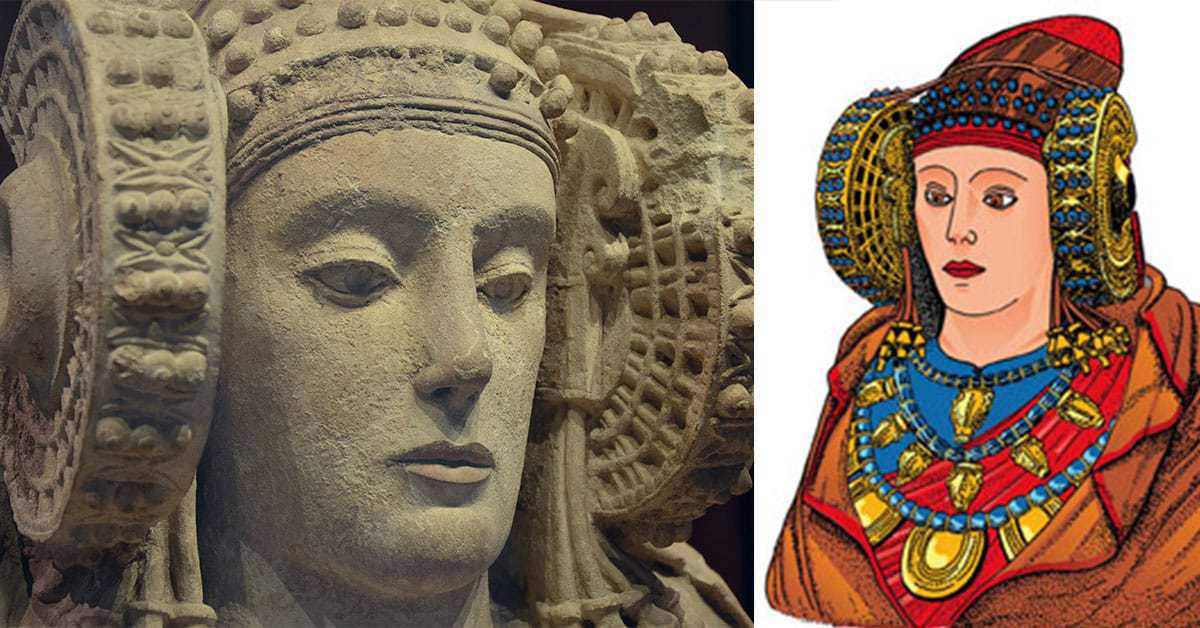The city of Elche in southeastern Spain is a beautiful tourist attraction, home to a perfect blend of beauty and history. Many of the buildings and sites have been standing for centuries. It boasts The Palm Grove of Elche, one of the largest palm groves in the world that was declared a World Heritage site in 2000. Altamira Castle, which currently houses the Elche Archaeology and History Museum, is still standing after being built in the twelfth century. Although trade has dwindled in recent years, Elche is an important agricultural center, growing and exporting fruits such as dates and pomegranates.
It is also a famous shoe manufacturer in Spain, shipping major brands all over Europe from its nearly 1,000 shoe factories. What the city is best known for, however, is not its beautiful sites or export businesses – it is a mysterious artifact that was found there in 1897 and sparked the study of the pre-Roman Iberian period: The Lady of Elche.
At L’Alcùdia, an archaeological site about a mile and a half south of Elche, the limestone bust of a woman was found hidden in a wall on the estate on August 4, 1897. Carved in the 4th century BCE, the Lady of Elche is an Iberian artifact with Greek characteristics. She is most recognizable for her wheeled headdress, which suggests that she was a priestess. Scholars found traces of red, white, and blue paint on the limestone, as well as traces of an unknown material in the opening behind her head.
There are two different versions of the discovery of the Lady of Elche: the popular version tells the story that a young worker named Manuel Campello Esclapez, a young boy of 14, overturned a stone while he was working and found the face of the bust. The more official version, however, written in the record by the local scribe Pedro Ibarra, details that a man named Antonio Macia, one of the farm workers clearing the southeast end of L’Alcùdia for agricultural purposes, found the bust. Either way, she was excavated, and the locals nicknamed her “Reina Mora” (“Moor Queen”), a reference to the North African Muslim occupation of the area after the fall of the Roman empire.

Part of the mystery that lies behind the Lady of Elche’s mysterious gaze is how she comes to us almost intact in a region where a variety of cultures with different religions settled the area. Originally colonized by the Greeks, the Carthaginians later settled the Iberian Peninsula, the southwest corner of Europe that is home to modern-day Spain and Portugal, in the sixth century BCE. Archaeological evidence has been found at L’Alcùdia, traces left behind of when the Carthaginians settled the area.
The Romans absorbed Carthaginian territories in Spain after they defeated Carthage in the Second Punic War in 201 BCE. The Romans then settled the area near Elche, making it one of their many colonies spread over their vast empire. The Romans lost their Spanish colonies to the invading Germanic Visigoths as the Roman empire fell at the end of the fifth century. A Muslim army defeated the Visigoths in the 8th century and remained in the Iberian Peninsula until James of Aragon took back the Spanish lands for the Christians from the Muslims in the Reconquista of the 13th century.

